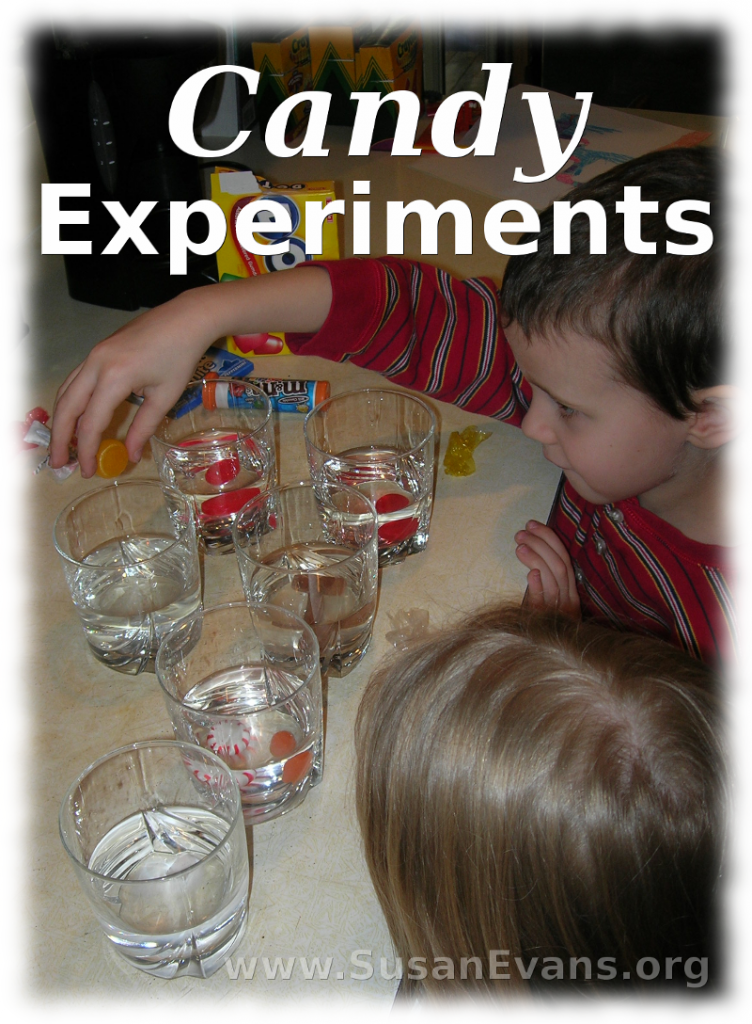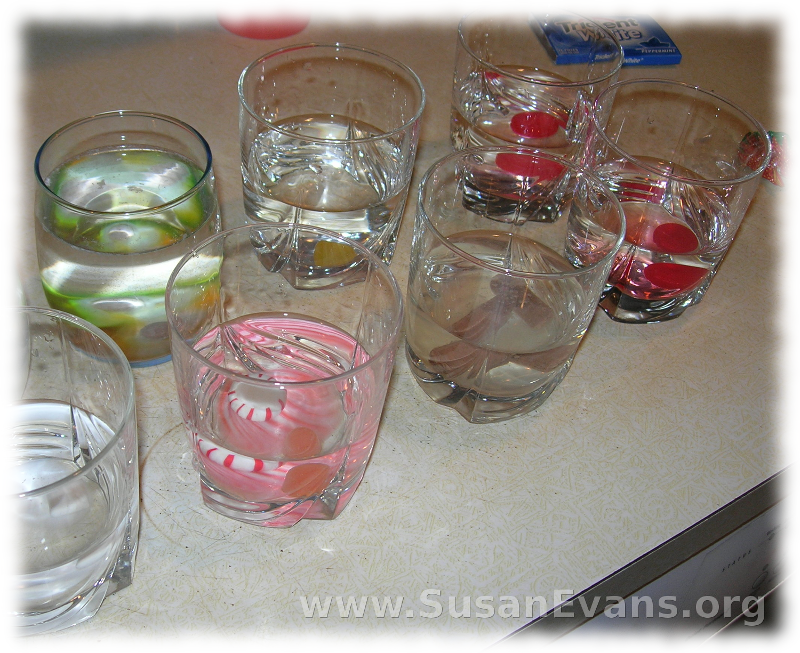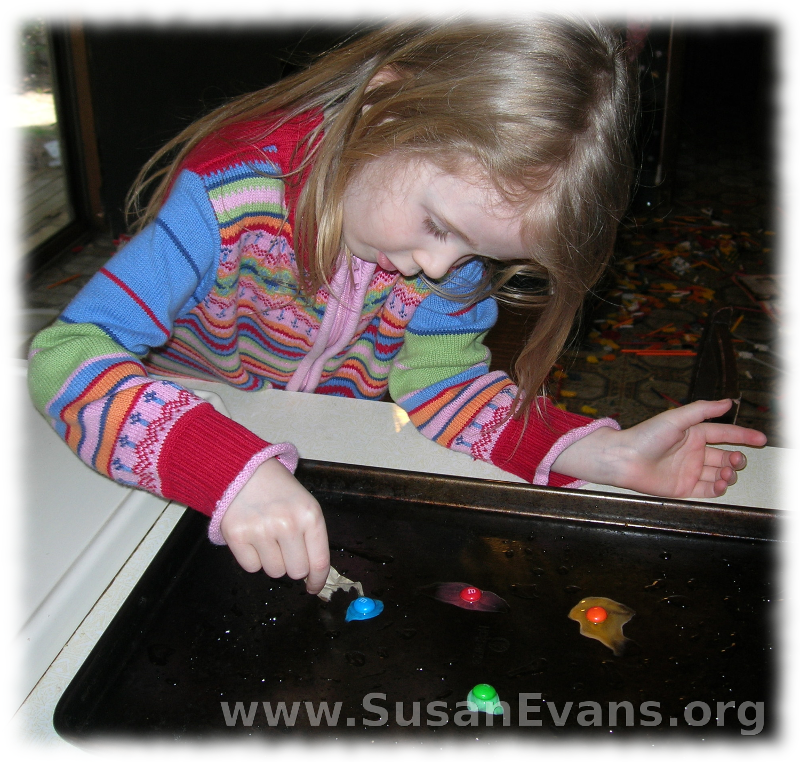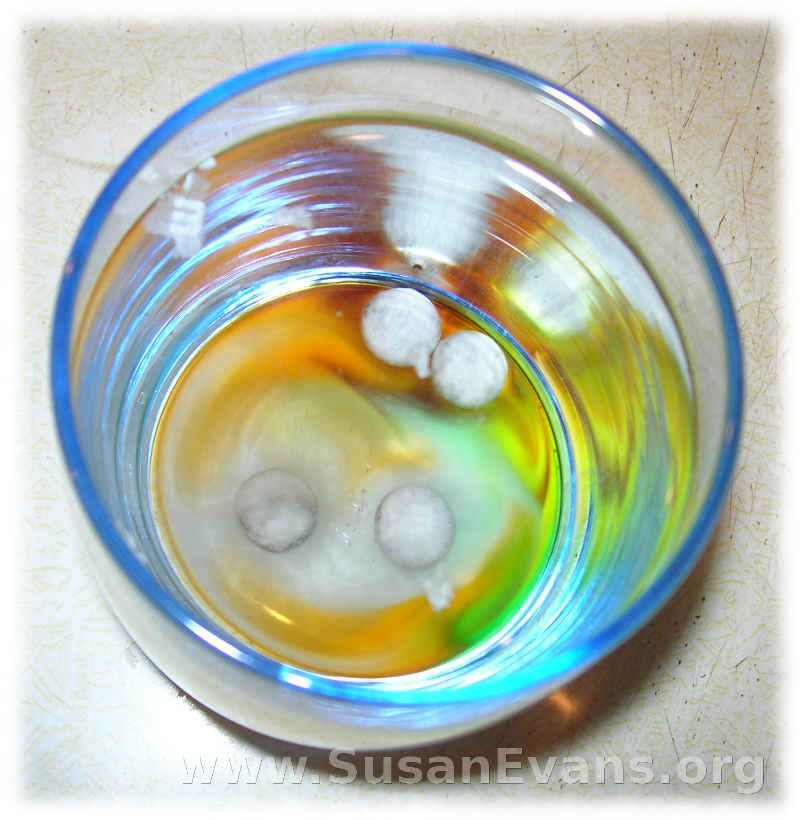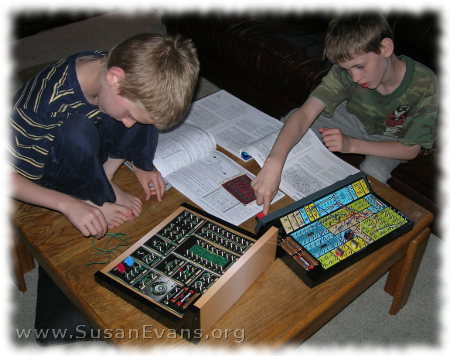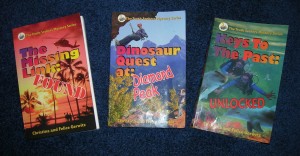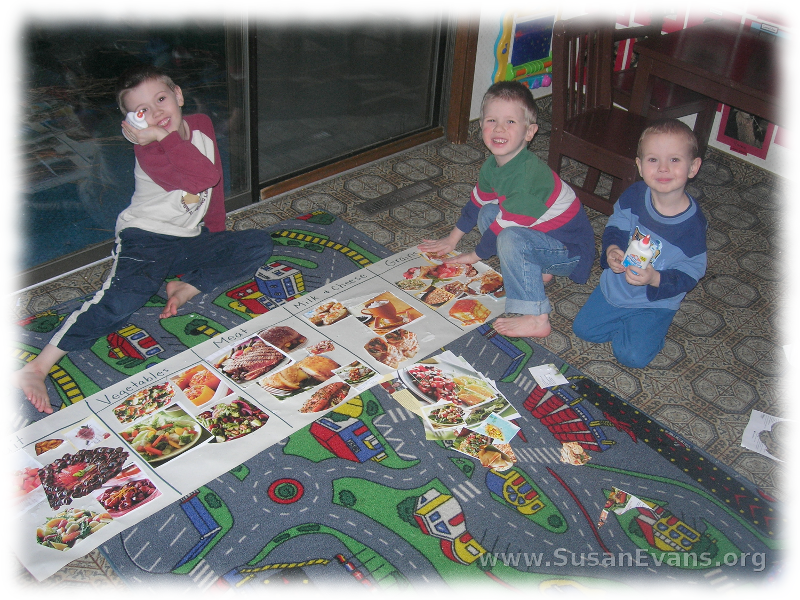Whenever there is too much candy in the house is a great opportunity to do candy experiments. One experiment is the acid test. Pour water into several glasses, and plunk in a candy into each one. If the candy is sour, it will be more fun. Dump a spoon of baking soda into the water. If bubbles appear, the candy is acidic.
Another experiment is to see whether candy dissolves faster in cold or hot water. (The molecules move faster in hot water, which is why it dissolves faster.)
My daughter was watching as M&M’s dissolved in a shallow pan of water. She stuck a paper towel into it and saw the color creep up the paper towel.
You can do a sinking and floating experiment, to see which candies are denser than water. None of our candy floated, since it was hard candy. Lighter candy like 3 Musketeers would float, but who wants to ruin chocolate? Chocolate is never a left-over candy at our house.
The most fun activity we did during these candy experiments was to throw M&M’s into some water to dissolve. (I know, I’m wasting perfectly good chocolate, but this experiment is worth it.) The M’s began floating on the top of the water, disconnected from the M&M’s. (The wax from the M’s was less dense than water.) It was almost like a magic trick.
